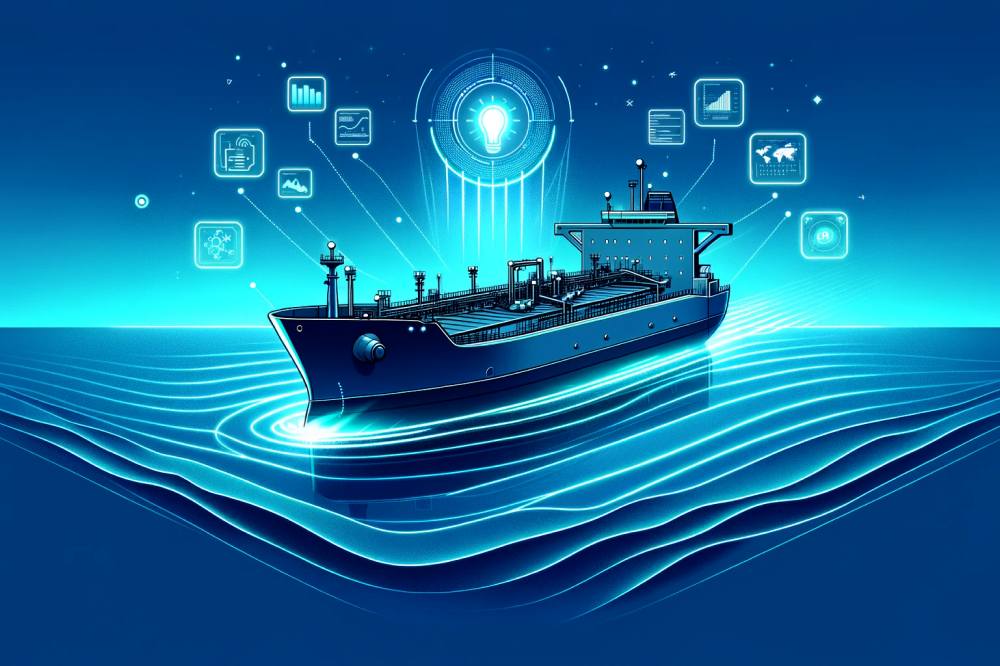
Different type and sizes of tanker vessels
Tankers or tanker vessels are designed to carry liquid cargoes in bulk. They are in almost any size and their size is measured in cargo carrying capacity and the unit is either cubic meter or metric tons (dwt). The majority of tanker vessels carry oil, chemicals, or gas. Some tankers are built for very specialized cargoes and only carry one specific product: such as bitumen, freshwater, or wine, while other oil tankers carry many different types of liquid products such as chemical and clean cargoes.
All tankers have tanks, pumps, and pipes. Some tankers can carry many different grades of cargoes simultaneously and have several cargo tanks and a complicated pumping and piping system to facilitate a separate handling process for each type of cargoes, so cargoes are not contaminated.
In MaritimeOptima we decided to create four tanker segments; tankers (clean, dirty and crude), chemicals, LPG, and LNG. Each segment has its sub-segments.
We divide the tankers into sub-segments by using the size dwt.
Tankers

Clean tankers
Carrying light refined petroleum products that don’t need heating and have coated tanks. Most of the tanks are coated with conventional epoxy or phenolic epoxy coating and the tanks need to be cleaned very thoroughly when a vessel switch to carry a new cargo. The clean tankers do often have advanced cargo segregation systems and many tanks.
You will find many tanker vessels carrying both chemical (IMO 3 classified cargoes) and light refined petroleum products cargoes. Examples of light refined petroleum products are Gasoline, Kerosene, Jet fuel.
We defined clean tanker in the size of 43 000 – 50 000 as Medium range (MR)
Chemical vessels
Chemical tankers usually ranging from 5,000 to 59,000 DWT in size, which is smaller than the average size of other tankers.
Chemical tankers have many separated cargo tanks that are either coated with phenolic epoxy or zinc paint or made from stainless steel. The coating or cargo tank material determines what types of cargo a particular tank can carry: stainless steel tanks are required for aggressive acid cargoes such as sulfuric and phosphoric acid, while ‘easier’ cargoes — such as vegetable oil — can be carried in epoxy coated tanks.
IMO 1 chemical tankers transport the most dangerous products, and very often these vessels have stainless steel tanks.
IMO 2 chemical tanker transport products requiring significant preventive measures.
IMO 3 chemical tanker transport products requiring a moderate degree of containment to increase survival capability in a damaged condition. Very often you will find these vessels trading in the clean market segment.

Dirty
Carrying refined products that need heating. The vessels have heating coils in each tank but the vessel’s tanks are not coated. These vessels carry residual refined products such as residual fuel, but these vessels can also carry crude oil.
Residual fuel oil is one of the lowest-value petroleum products from a refinery. It is a by-product of producing light products. Residual fuel oil is used in power plants and industrial boilers. It is also the primary fuel (called bunkers) for ocean-going ships.
Residual fuel oil has some quality specifications for performance and environmental reasons, such as:
Viscosity:
This is a measure of a fluid's tendency to resist flow. Lower viscosity is more desirable
Sulfur content:
Fuel oil has a maximum sulfur content determined by environmental concerns. This is typically set as a maximum sulfur content in wt %.
We define tanker vessels in the size of 50 000 – 80 000 dwt as Panamax (LR 2). These carry both dirty products and crude.
Tanker vessels in the size of 80 000 – 125 000 dwt we define as Suezmax, but these vessels are also very often defined as LR 2. These carry both dirty products and crude.
Tanker vessels bigger than 125 000 dwt normally only carry crude cargoes.
Crude oil tankers
A crude oil tanker normally carries one cargo grade at a time. Crude oil has many different varieties (crude grades). As a natural raw material, crude oil comes from different fields and reservoirs and have very different properties. Examples of some well-known crude grades are Brent and WTI.
The most common characteristics used to identify the quality of crude are its API gravity and its sulfur content. The highest valued crude grades are typically those with high API gravity and low sulfur content.
Other tankers
There are a variety of different tanker vessels designed for carrying specific liquid cargoes such as bitumen, freshwater or wine, molasses, juice, or bunker tankers. Maritime Optima has for the time being classified these vessels as “others”.















